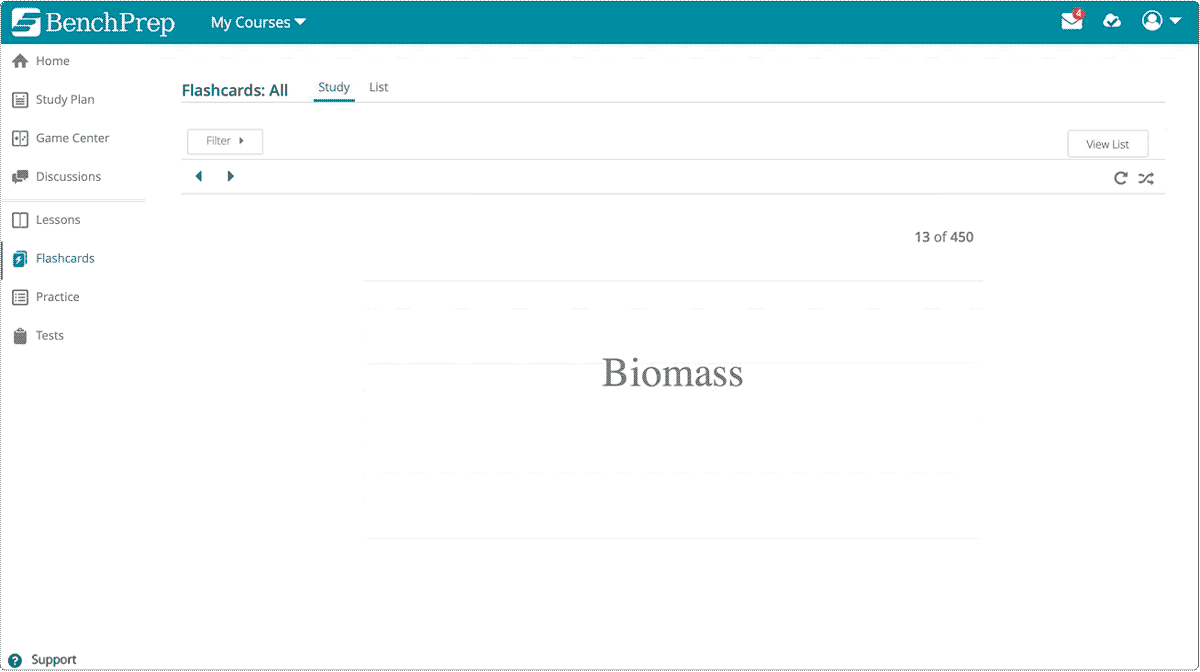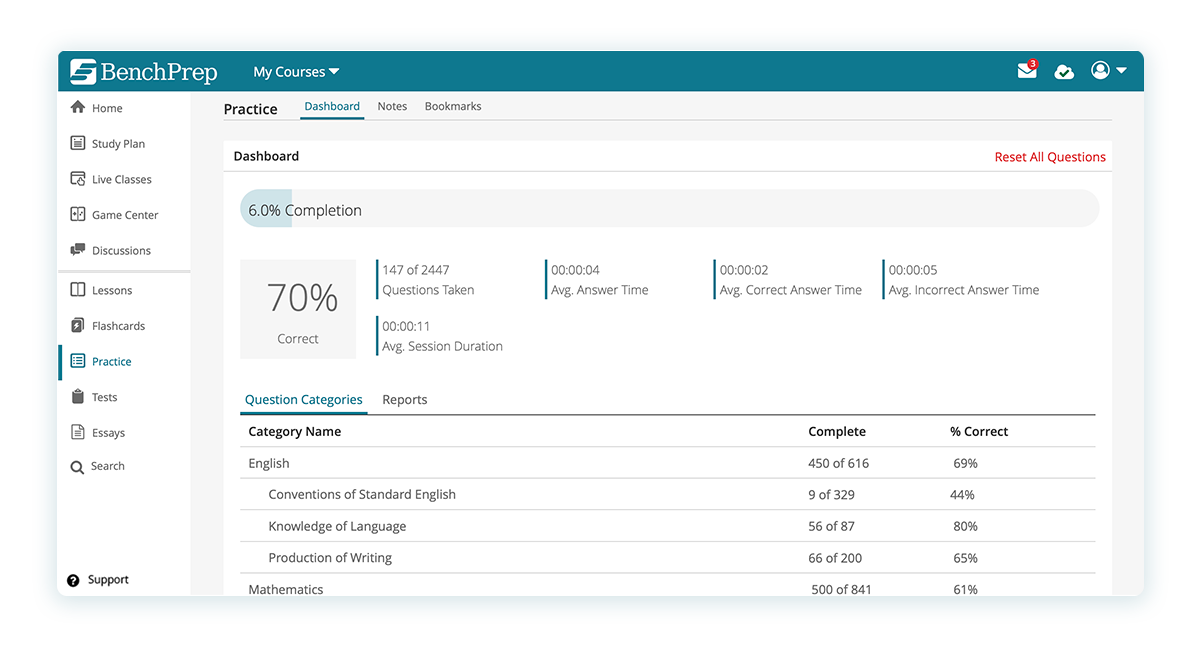Redefining the Member Experience: The Integral Role of Practice in the Lifelong Learning Journey
Professional athletes dedicate their lives to it. Famed authors write about it. And today’s learning professionals are doing it more and more to meet the changing demands of the skills-based hiring market.
We’re talking about practice.
But why is practice so crucial for your association and your members? Keep reading to find out.
If "Practice Makes Perfect," Why Doesn't Every Association Offer It?
The learning case for practice is clear. It’s a pivotal step of the learner journey and it’s proven to support deeper learning. What’s more: there are dozens of ways to practice, each with its advantages.
Interleaving, for example, helps learners apply multiple aspects of a certain process or procedure. Microlearning breaks up modules into bite-sized pieces for convenient learning and knowledge retention. And memory practices—like using flash cards—help learners focus their energy on recalling information.

Despite the learning benefits of practice, many associations overlook this crucial phase in the Learn → Practice → Certify → Continuing Education journey. The reasons for this omission vary. Limited resources may hinder associations from prioritizing this phase, while concerns about maintaining credibility for credentialing purposes may also play a role.
But more often than not, the problem is a lack of awareness. Many people don’t know about practice products’ strategic value. That’s why we’ve written this blog, to highlight three reasons a practice product benefits your business and your learners.
Reason #1: Practice Builds Learner Loyalty
Let’s look at the lifelong learning journey. It operates like a chain where each step links to another. When you cut out the practice phase, you break the link between learning and certification.
In real terms, this breakage usually means your learners go elsewhere for practice. Your learners may visit sites with outdated resources, which can hurt certification progress. Alternatively, your learners may visit sites that offer all four phases of the lifelong learning journey—and choose to use that association going forward. In both scenarios, your learners and your business suffer.
Consider how that experience changes when your business offers a practice product. Your learners don’t need to scramble for practice resources. They’re confident your organization equips them with what they need to succeed, and they reward your investment into your practice product by using it long-term.
Case in point: roughly 80 percent of members engage with practice products. This makes them some of the most popular offerings in portfolios for associations such as the Association of American Medical Colleges (AAMC) and the Association for Supply Chain Management (ASCM).
Reason #2: Practice Creates a New Revenue Stream
Financial sustainability is a never-ending priority for associations. Offering a practice product helps address that priority by diversifying and expanding your revenue. In fact, the Graduate Management Admission Council (GMAC) saw a 133-percent increase in sales in the first year of unveiling prep and practice materials to its members.
To that end, there are a few ways to deliver this practice. You may:
- Add it to your existing products and increase the price accordingly.
- Offer the practice product as its own add-on service.
- Include the practice product for free with new certification registrations.
But this revenue generation doesn’t just come from the practice product itself. When you add a practice product, you’re also increasing the amount of learner data you can use. And that data is as good as gold. It gives you insights into how your learners use your products, what value they may derive from those products, and whether there are any opportunities to improve your offerings.  This product addition can also help you drive revenue by growing your learner base. Remember how organizations risk losing learners by failing to offer the full lifelong learning journey? The reverse is also true. Don’t be the association that loses learners; be the association that attracts them.
This product addition can also help you drive revenue by growing your learner base. Remember how organizations risk losing learners by failing to offer the full lifelong learning journey? The reverse is also true. Don’t be the association that loses learners; be the association that attracts them.
Reason #3: Practice Boosts Learner Confidence to Drive Learner (and Business!) Results
We’ve said it before and we’ll say it again: the most critical barrier to certification completion lies in the scarcity of practice opportunities that accurately reflect the actual exam experience. A 2022 study supports this stance: increased participation in practice tests led to higher final exam scores for those participants. While many associations primarily concern themselves with the credibility of an exam—and any accreditation they may have—this concern leaves learners to fend for themselves. They need to find, vet, and enroll in practice courses from other learning providers. That takes time and can erode the confidence a learner may have in their certification plan.
While many associations primarily concern themselves with the credibility of an exam—and any accreditation they may have—this concern leaves learners to fend for themselves. They need to find, vet, and enroll in practice courses from other learning providers. That takes time and can erode the confidence a learner may have in their certification plan.
We know the role that confidence plays in determining certification completion. When learner confidence is high, exam scores and completion rates often follow. That same “confidence” logic can extend to associations. When learners feel confident in their association, their engagement rises. And engagement is a key driver of certification success.
As we noted earlier, adding a practice product also gives you and your learners access to more data. Both groups can use data to enhance the certification process. Learners can use it to confirm which areas of a practice exam they should revisit. Associations can use it to deliver a more inclusive, equitable learning experience.
Don't Give Your Learners a Reason to Abandon Their Journey
Integrated practice solutions not only enhance retention, satisfaction, and completion rates but also foster a culture of continuous learning, increasing the likelihood of re-enrollment. Moreover, they are indispensable for your learners' success. Failure to provide these essential practice opportunities risks losing members to competitors who prioritize comprehensive learning experiences.
But adding a practice product isn’t like hitting a button. You need to clarify your learning program goals, align them with your broader business goals, and make sure your practice product feeds into both. Plus, you need to find a learning technology that can deliver an exceptional practice experience.
That’s where an LMS comes in. The right LMS ensures you can cover each phase of the Learn → Practice → Certify → Continuing Education journey and support lifelong learners. Interested in seeing the difference a practice-oriented LMS can make for your association? 





